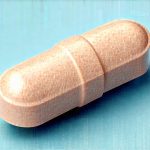Iron deficiency is a surprisingly common issue, affecting people across all demographics, though particularly prevalent among women of childbearing age, pregnant individuals, growing children, and those with certain dietary restrictions. While iron supplementation and consuming nutrient-dense meals are vital for restoring healthy iron levels and overall wellbeing, they often come with an unwelcome side effect: nausea. This unpleasant experience can deter adherence to necessary treatment plans or prevent people from enjoying the benefits of a carefully planned diet. It’s crucial to understand why this occurs and, more importantly, what strategies can be employed to minimize these bothersome symptoms, enabling individuals to effectively address their iron needs without significant discomfort.
The root cause isn’t necessarily the iron itself, but rather how our bodies process it. Iron supplements, even in seemingly small doses, can irritate the stomach lining. This irritation is amplified by the concentration of iron and its inherent chemical properties. Similarly, increasing intake of nutrient-rich foods – while undeniably healthy – introduces a higher volume of food to digest, potentially overwhelming the digestive system, especially if the body isn’t accustomed to it or if there are existing sensitivities. Furthermore, certain nutrients commonly found in iron-rich foods, like fiber and fats, can also contribute to feelings of fullness or discomfort, exacerbating nausea. The good news is that proactive steps can significantly lessen these effects, making iron restoration a more manageable experience. Understanding the impact of hydration strategies can also play a key role in mitigating discomfort.
Understanding the Source of Nausea
Nausea from iron supplements isn’t just about stomach upset; it’s often tied to how the body metabolizes and reacts to increased iron load. Different forms of iron are absorbed at varying rates and levels, directly impacting the likelihood and severity of nausea. For example, ferrous sulfate, a commonly prescribed form, is known for its higher absorption rate but also carries a greater risk of gastrointestinal distress compared to gentler alternatives like ferrous gluconate or ferrous fumarate. It’s essential to discuss these options with your healthcare provider to determine the most appropriate formulation for your individual needs and tolerance levels. A focus on how to structure meals can also help with digestion.
Beyond the type of iron, dosage plays a critical role. High doses are more likely to trigger nausea than smaller, more frequent administrations. The body can only process so much iron at once; exceeding this capacity leads to irritation and discomfort. Nutrient-dense meals, while beneficial, can also contribute if introduced rapidly or in excessive quantities. A sudden increase in fiber intake, for instance, can overwhelm the digestive system, leading to bloating, gas, and nausea. This is why gradual increases are generally recommended.
Finally, individual sensitivities and pre-existing conditions significantly impact susceptibility to nausea. People with sensitive stomachs, irritable bowel syndrome (IBS), or a history of gastrointestinal issues may experience more pronounced symptoms than others. Even stress and anxiety can exacerbate digestive discomfort, amplifying the feeling of nausea. Recognizing these contributing factors is the first step toward effective management. In some cases, this could be indicative of chronic nausea.
Strategies for Minimizing Nausea
The key to minimizing nausea lies in a multifaceted approach that addresses both iron supplementation and dietary changes. It’s about optimizing absorption while reducing irritation. Start with timing: taking iron supplements with food, specifically a meal containing vitamin C, can enhance absorption and buffer the stomach, lessening its impact. Vitamin C aids in converting ferric iron (the form found in many supplements) to ferrous iron, which is more readily absorbed. However, avoid combining iron with calcium-rich foods or beverages, as calcium inhibits iron absorption.
For nutrient-dense meals, gradual introduction is paramount. Don’t overhaul your diet overnight; instead, slowly incorporate iron-rich foods and fiber-rich sources over several weeks. This allows the digestive system to adapt without being overwhelmed. Smaller, more frequent meals are also easier on the stomach than large, infrequent ones. Hydration is another crucial component – drinking plenty of water helps facilitate digestion and reduce feelings of fullness or bloating.
Consider exploring alternative supplementation methods beyond pills. Liquid iron formulations often contain lower doses per serving and may be gentler on the stomach. Liposomal iron offers improved absorption with reduced gastrointestinal side effects due to its encapsulation within fat-soluble liposomes, protecting the digestive tract. Again, discussing these alternatives with your healthcare provider is essential to determine what’s right for you. Herbal treatments like ginger can also provide some relief.
Optimizing Iron Supplementation
Iron supplements aren’t a one-size-fits-all solution. Understanding different types and utilizing strategies to mitigate side effects can make a world of difference.
– Choose the Right Form: As previously mentioned, ferrous gluconate and ferrous fumarate are generally better tolerated than ferrous sulfate. Liposomal iron is also an excellent option for sensitive individuals.
– Start Low and Go Slow: Begin with the lowest effective dose prescribed by your doctor and gradually increase it as tolerance allows.
– Split Dosage: Instead of taking a large dose once daily, divide it into smaller doses throughout the day to minimize stomach irritation.
Beyond choosing the right supplement, consider how you take it. Never take iron supplements with tea or coffee, as tannins in these beverages interfere with absorption. Avoid antacids simultaneously, as they reduce stomach acidity needed for optimal iron uptake. If your supplement causes significant nausea even with adjustments, discuss a different formulation or alternative delivery method with your healthcare provider. Managing acid buildup can also reduce discomfort.
Dietary Adjustments and Food Combinations
Nutrient-dense meals are the cornerstone of good health, but strategic planning is crucial when addressing iron deficiency. Focus on incorporating iron-rich foods gradually – lean meats, poultry, fish, beans, lentils, spinach, fortified cereals, and dried fruits are all excellent choices. Pair these with vitamin C-rich foods like citrus fruits, strawberries, bell peppers, or broccoli to enhance absorption.
Avoid combining high-iron foods with inhibitors of iron absorption. This includes:
– Calcium-rich foods (dairy products)
– Phytates found in legumes and grains (soaking can reduce phytate content)
– Tannins found in tea and coffee.
Consider the cooking method – steaming or lightly sautéing vegetables preserves more nutrients than boiling. Also, be mindful of portion sizes. Overeating, even healthy foods, can lead to digestive discomfort. Incorporating ginger into your diet – as a tea, spice, or supplement – may help alleviate nausea naturally. Proper posture during meals can also aid digestion.
Lifestyle Considerations and Supportive Therapies
Nausea isn’t always solely about what you ingest; lifestyle factors play a significant role. Stress management techniques like deep breathing exercises, meditation, or yoga can reduce anxiety and improve digestive function. Regular physical activity promotes gut motility and reduces bloating. Adequate sleep is crucial for overall wellbeing and helps regulate the digestive system.
If nausea persists despite these measures, explore complementary therapies. Acupuncture has shown promise in alleviating nausea associated with various conditions. Peppermint aromatherapy may offer soothing relief. However, always discuss any complementary therapies with your healthcare provider before trying them, especially if you have underlying health conditions or are taking other medications. Remember that consistent communication with your doctor is key to managing iron deficiency effectively and minimizing unpleasant side effects. They can provide personalized guidance based on your individual needs and ensure the best possible outcome for your overall health. Physical inactivity can also contribute to these issues.


















